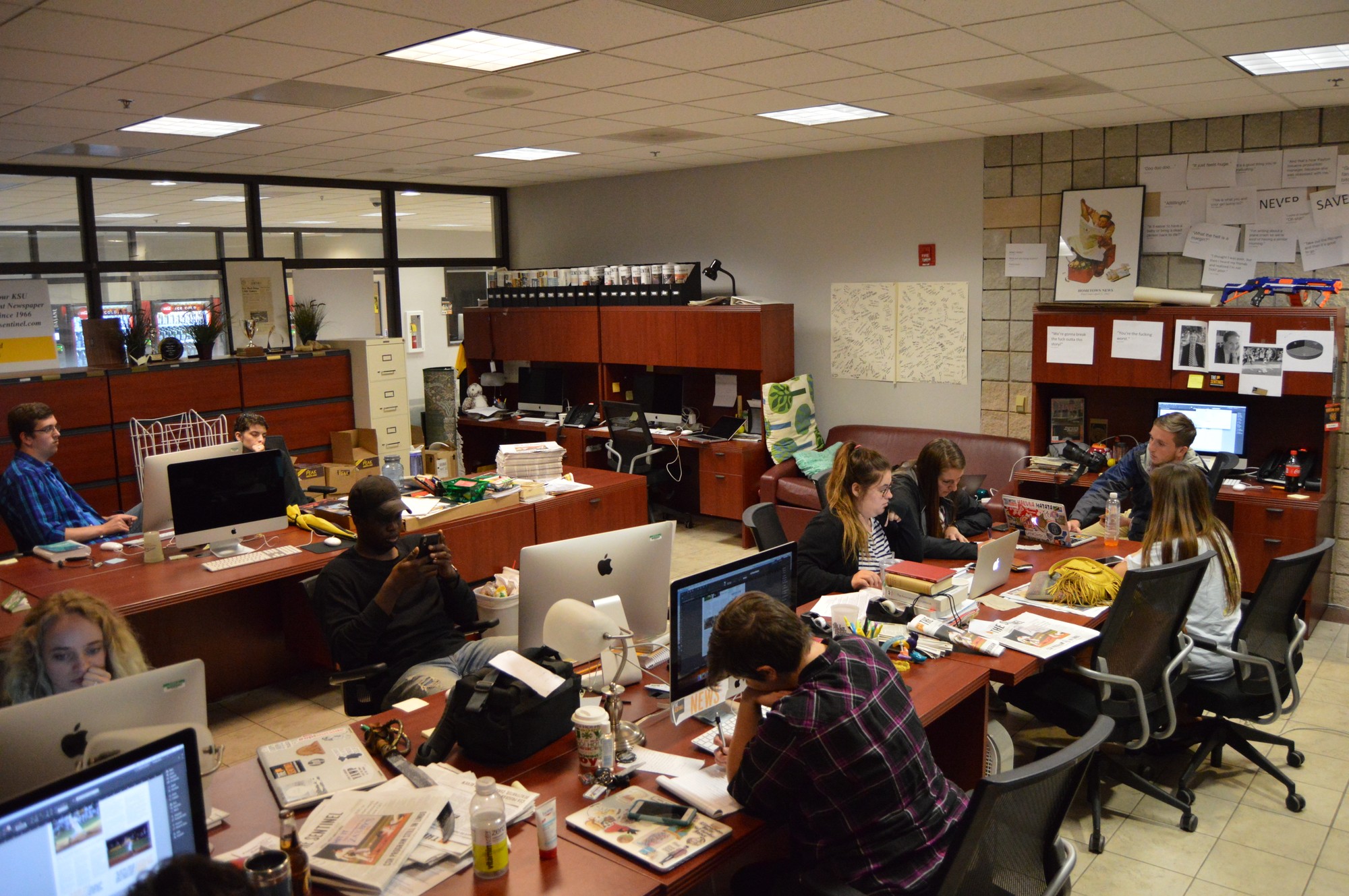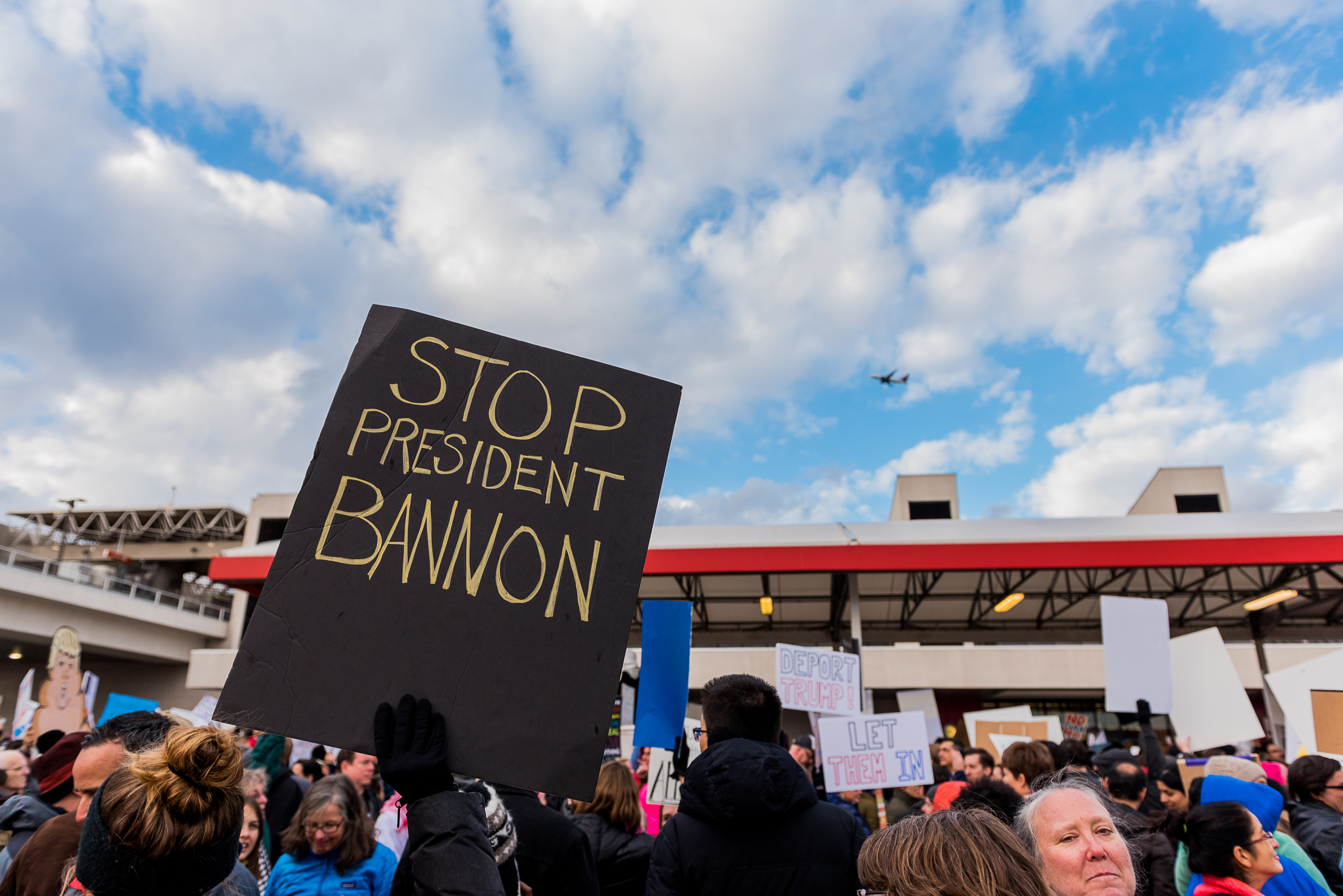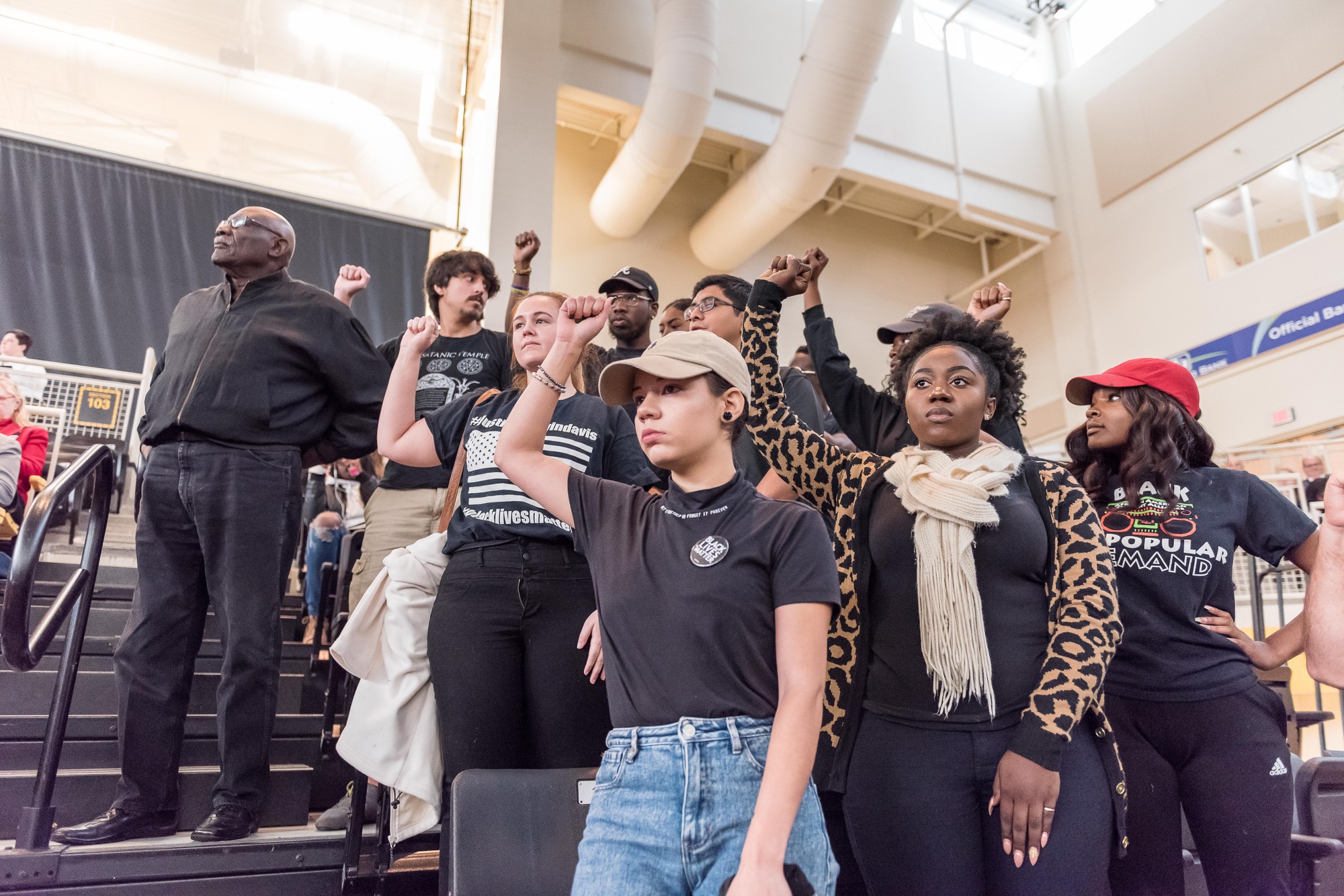“Don’t get in the professionals’ way.”
That was a statement said to Cory Hancock, then-photo editor for The Sentinel, by a press manager for the Trump-Pence campaign in September 2016 right before a press conference with Newt Gingrich.
Hancock and then-staff-writer Madeline McGee did not get in the professionals’ way, and, in fact, took the feature photo for the story and participated in questioning the former speaker of the house just as everyone else did.
Student media is still the media. That could not be truer as student outlets like The Sentinel face budget cuts, staff cuts and growing disdain from those loyal to their respective universities around the country.
As more newsrooms — both professional and student-run — face these constraints, student media is more vital than ever. More and more local outlets are being forced to layoff reporters, and a gaping hole has been left behind that desperately needs to be filled.
The Sentinel is not immune to these issues. While we have maintained a consistent once-per-week print schedule, the entire editorial team’s stipends were cut by 10 percent in 2017, and our entire staff of designers was laid off after we learned we would no longer have the funds to pay them.
Our staff has never been massive either. The Sentinel is currently made up of nine minimally-payed staffers — four section editors, a photo editor, a managing editor, an engagement director, a production manager and an editor-in-chief. We are incredibly lucky to be paid as many newsrooms — like The Independent Collegian at the University of Toledo — do all of their work for free.
All of our writers and photographers — totaling nearly 40 — operate on a volunteer basis, writing week-in and week-out to ensure The Sentinel has quality content.
On top of this, every single member of The Sentinel is a student, most of whom are full time — meaning 12 or more credit hours. Nearly all of us also have jobs and internships we partake in to help supplement our income to pay rent and bills, purchase food and gas, and cover student loan debt.
This editorial does not serve as a place for us to whine and complain about the difficulties of student media — it’s meant to give you, the reader, an understanding of how dedicated this group of students is to ensuring quality journalism is conducted for a campus community that deserves to know what is going on at a school they pay thousands of dollars to attend.
We are no different from the “professional” news outlets in our area. We wear the same press credentials and are held to the exact same standards. We are the future of those outlets, and it is crucial that we have a stable framework to operate from. That cannot happen if we have a minimal budget.
The Sentinel has seen numerous reporters take internships at the AJC and find employment after graduation as a result of their time here — most recently, Sierra Hubbard at The Keene Sentinel. When we are seeking employment after graduation, the majority of us will place our time at The Sentinel at the top of our resumes because it has given us so much valuable experience.
The Sentinel has never been an independent publication. It receives funding from the Student Activities Budget Advisory Committee at KSU and relies on that money for printing, student assistants and office expenses.
While we have not fully faced censorship nor infringement on our editorial freedom, the possibility is still there. KSU has maintained an even keel relationship with us and has served to treat us just as they would another independent publication.
The same cannot be said for other student outlets. Some people feel student newspapers are actually tainting the image of their universities by providing real, respectable journalistic coverage. The Daily Egyptian — Southern Illinois University’s student newspaper — recently responded to assertions like those in an editorial by Editor-in-Chief Athena Chryanthou, explaining how it is not a public relations firm for the university.
Student media is more than a weekly project that students put together to feel like they’re accomplishing something journalistically. It is a meaningful, hard-working entity for students to execute the concepts learned in classes to inform their campus community of everything affecting their university.
Without student media, reporting on the KSU cheerleaders being kept off of the field, KSU not reporting on-campus rapes and KSU’s CIO being placed on leave would have never occurred. All of these stories were pivotal moments in the life of KSU over the past year, and we were the first to report every single one of them.
Quality reporting on university issues will be lost if the problems we face are not recognized and addressed. This is how we have chosen to address it. Now, it’s up to universities across the country to step up and find a solution with the students. We all must strive to #SaveStudentNewsrooms.
You can learn more about #SaveStudentNewsrooms at https://savestudentnewsrooms.com. Join The Sentinel and more than 100 student newsrooms on April 25 in bringing more awareness to the issues student newsrooms across the country face.
Cory Hancock, Connor Zielke, Payton Butler, Abbie Bythewood, Killian Grina, Elizabeth Nouryeh, Marquis Holmes, Sabrina Kerns and Rio White contributed to this article and make up The Sentinel’s editorial board.



